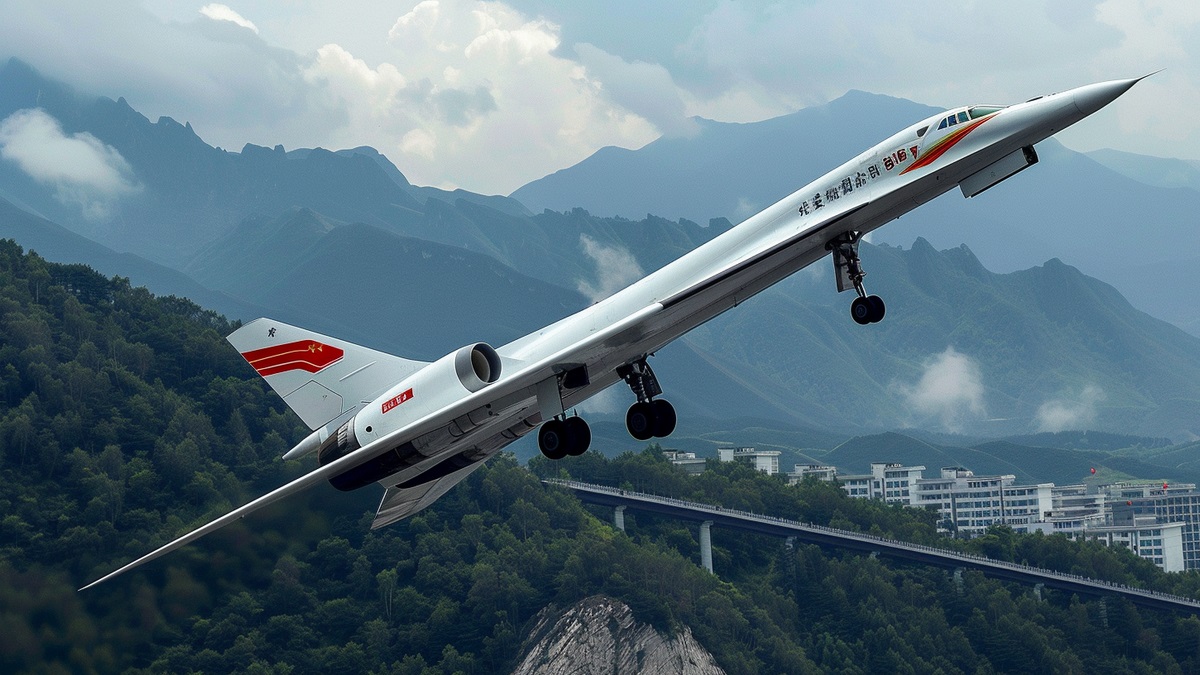A game-changing leap in hypersonic propulsion
A new Chinese engine concept promises speeds near 20,000 km/h, bringing global travel within roughly two hours. If realized at scale, the technology could redefine both civilian flight and strategic military reach.
The design hinges on a dual-mode combustion cycle that optimizes efficiency across a vast speed range, from transonic to deep hypersonic. Below about Mach 7, the engine employs a rotating detonation approach, where fuel–air mix burns in continuous, spiral shock waves to extract more energy from every kilogram of propellant.
Past that threshold, an oblique detonation regime takes over, using a carefully angled intake to pre-compress incoming air before ignition stabilizes along an inclined shock front. The result is higher specific impulse, greater stability under extreme loads, and sustained thrust at velocities where conventional systems quickly stall.
A world within hours
Imagine boarding in Paris and stepping off in New York in roughly two hours. Picture London to Beijing in about an hour, or Buenos Aires to Madrid in time for a late lunch. With sufficient reliability, such performance could compress continents into daily commuting ranges and rewrite the economics of global mobility.
For business, ultra-fast point-to-point routes could tighten supply chains and synchronize work across time zones. For travelers, it would expand weekend trips into new hemispheres and spur a wave of high-speed tourism. The real prize is higher global connectivity without sacrificing precious time.
How the dual-mode cycle could work
In rotating detonation mode, a ring-shaped chamber keeps combustion waves in perpetual motion, turning shock chemistry into net thrust. This approach reduces energy losses, trims hardware mass, and improves fuel economy relative to conventional constant-pressure burns.
As velocity climbs, the engine pivots to an oblique detonation pattern, effectively creating a controlled, anchored shock that ignites supersonic flow more cleanly. The geometry of the intake, the angle of the ramp, and the timing of injection all shape the resulting stability and thrust-to-drag balance.
Success will depend on advances in thermal management and high-temperature materials. Active cooling, ceramic composites, and oxidation-resistant coatings must withstand sustained hypersonic heating while keeping mass and maintenance burdens low.
Strategic and military implications
Hypersonic platforms blur traditional defenses by shrinking detection-to-response windows. Aircraft or missiles traveling at extreme speeds can outpace interceptors and complicate early-warning systems, reshaping the balance of power across large regions.
The United States, China, and Russia are all pursuing hypersonic capabilities with intense focus. If fielded, maneuverable, high-speed craft could challenge airspace control and pressure existing international norms around deployment, testing, and escalation.
“Hypersonics compress not only distance, but also decision time—introducing a strategic tempo the world is not yet prepared to manage.”
Barriers, risks, and the path to regulation
Despite the promise, major hurdles remain in economics, safety, and environmental impact. Ticket prices must justify the platform’s complexity, while certification must prove reliability at unprecedented speeds. Communities and ecosystems will demand solutions to shock, noise, and high-altitude emissions.
- Thermal protection and structural integrity over long-duration hypersonic flight
- Noise, sonic boom, and airport-adjacent operations in dense urban areas
- High-altitude NOx and contrail-climate effects at scale of commercial use
- Air traffic integration, separation minima, and emergency procedures
- Export controls, arms-control norms, and dual-use governance frameworks
Answering these questions will require joint work by engineers, regulators, and climate scientists. Transparent international standards could channel the technology toward civil benefit while minimizing escalation and environmental costs.
A responsible route to an astonishing future
The prospect of circling the globe in two hours is both thrilling and deeply disruptive. With rigorous testing, thoughtful policy, and clear environmental guardrails, hypersonic travel could broaden human possibility without narrowing collective safety.
Whether this engine reaches service quickly or advances in iterative steps, the direction of travel is unmistakably forward. Done well, it could inaugurate an era in which distance becomes a negotiable variable and time the ultimate common currency.

